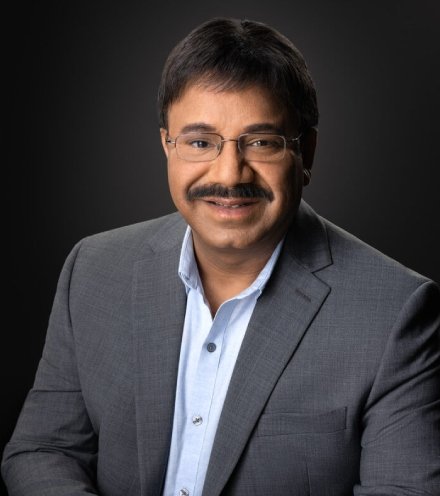Welcome to Top Surgery Art
FTM Top Surgery
Understanding FTM Top Surgery
FTM top surgery, also known as chest masculinization surgery, is a life-changing procedure for transgender binary men and non-binary individuals seeking to achieve a flat or masculinized chest appearance. This surgery plays a crucial role in aligning their physical body with their gender identity, often leading to significant improvements in self-confidence, mental well-being, and overall quality of life.
Before embarking on this journey, it's essential to gather comprehensive information about the procedure, its different types, potential outcomes, and the recovery process. This page aims to serve as a valuable resource, providing you with the knowledge you need to make an informed decision about FTM top surgery.
Taking this step towards gender affirmation is a deeply personal choice. We believe in empowering individuals to embrace their true selves and celebrate body positivity. By understanding the potential benefits of FTM top surgery, you can determine if it aligns with your personal goals, identity, and contributes to your overall well-being.



Generally, individuals who are 18 years or older, have a clear understanding of the procedure and its implications, and experience gender dysphoria associated with their chest can be considered candidates. We follow W-PATH guidelines for all ages. Individuals under the age of 18 years must meet additional requirements.
The most suitable technique depends on various factors like breast size, skin elasticity, and desired results. Common techniques include:
● Double Incision Mastectomy Top Surgery : Most common, removes breast tissue and potentially utilizes liposuction for contouring, with visible scars along the inframammary incisions.
● Peri-areolar Top Surgery : Focuses on removing breast tissue while preserving the nipple-areola complex, resulting in no or minimal scarring.
Like any surgery, FTM top surgery carries inherent risks like bleeding, infection, scarring, and anesthesia complications. However, choosing a qualified surgeon and following proper pre- and post-operative care significantly minimizes these risks.
The minimum age for FTM top surgery is typically 18 years old, as established by healthcare guidelines to ensure informed decision-making.
Nipple sensation can be diminished or lost after surgery, especially if nipple removal and grafting are involved. Some sensation may return over time, but sometime it might not be the same as before.
Insurance coverage for FTM top surgery varies depending on your specific insurance plan and state laws. It's crucial to check with your provider to understand your coverage details and potential out-of-pocket costs.
While gender dysphoria is a common reason for seeking FTM top surgery, it's not always a mandatory requirement. Some individuals may have other reasons for desiring chest masculinization, and ultimately, the decision rests with the individual and their surgeon.
Wearing a compression vest as instructed by your surgeon is crucial for aiding healing and minimizing swelling. The duration typically ranges from 4-8 weeks, but your surgeon will provide specific recommendations based on your individual case.
Potential risks and complications include bleeding, infection, scarring, nipple necrosis (tissue death), hematoma (blood clot formation), and anesthesia-related issues.
Studies suggest that the regret rate for FTM top surgery is extremely low, with most individuals reporting significant improvement in their well-being and reduced gender dysphoria after the procedure.
See our work
Advantages of Choosing
Dr. Ashu Garg

Extensive Experience
Dr. Garg brings over two decades of surgical experience to the table, covering a wide range of procedures from cosmetic surgery to complex transgender surgeries.

Holistic Care
With his knowledge in pre- and post-surgical assessment, wound management, and scar healing, Dr. Garg ensures comprehensive care from start to finish.

Recognized Expertise
Dr. Garg's academic and practical expertise is recognized globally, making him a trusted choice for FTM top surgery. His membership in esteemed organizations like the American Academy of Cosmetic Surgery and WPATH further attests to his competence and dedication to the field.

About Our Clinic
Dr Ashu’s expertise in FTM Top Surgery

As an FTM surgeon, Dr. Garg’s proficiency extends beyond traditional surgery. His formal fellowship training in Cosmetic Surgery in Seattle equipped him with advanced skills in liposculpture, body contouring, facial cosmetic procedures, and complex transgender surgeries. This diversified experience makes him an ideal surgeon for FTM top surgery, as he understands the intricate balance between aesthetics and functional outcomes.
When seeking the best FTM top surgeons, Dr. Ashu Garg stands out in the field. Boasting an impressive career spanning over two decades, Dr. Garg has honed his skills across multiple facets of surgical and aesthetic procedures. After receiving his medical degree in India, he expanded his knowledge and expertise across prestigious institutions in India and the United States. From specialized residency training in Surgery and Plastic Surgery in India, extensive oncological surgical procedures at Tata Memorial Cancer Center, to clinical research in Vascular Surgery at the esteemed
Massachusetts General Hospital of Harvard University, Dr. Garg’s journey is a testament to his dedication and commitment to his craft.
With his exemplary credentials, it’s no surprise that Dr. Garg is regarded as one of the best FTM top surgeons. His commitment to optimal cosmetic outcomes is evident in his meticulous approach to surgery and post-operative care, complemented by his expertise in scar healing and wound management.
Candidacy Criteria: Are You Ready for FTM Top Surgery?
FTM top surgery is a significant step on your gender transition journey, and determining your candidacy is crucial for a safe and successful outcome. Understanding the eligibility criteria ensures you are well-prepared for the procedure, both physically and emotionally. Here are some key factors to consider:
Age Requirements:
Generally, FTM top surgery requires being at least 18 years old. In some cases, minors with parental consent and specific guidelines set by healthcare professionals may be considered.
Mental Health Stability and Readiness:
Persistent and well-documented gender dysphoria is a crucial factor. A mental health professional's evaluation confirms your understanding of the procedure. It ensures your emotional readiness for the potential changes and recovery process.
Hormone Replacement Therapy (HRT) Considerations:
While not always mandatory, HRT can significantly impact breast tissue composition and surgical outcomes. Discussing your HRT status with your surgeon is essential for tailoring the surgery accordingly.
Realistic Expectations:
FTM top surgery aims to achieve a flat or masculinized chest appearance. However, individual results may vary depending on factors like anatomy and chosen technique. Having realistic expectations about the outcome and potential scarring is crucial for a positive experience.
Consultation with a Qualified Surgeon:
A thorough consultation with a well-qualified cosmetic surgeon specializing in FTM top surgery is vital. They will assess your individual needs, medical history, and candidacy for the procedure, discussing different surgical techniques and potential risks and benefits.
Addressing Specific Concerns:
Open communication with your surgeon is essential. Discuss any specific medical conditions, concerns, or requirements you may have to ensure a safe and personalized surgical plan. Remember, your surgeon is there to guide you through the entire process and address any questions or anxieties you may have.
FTM Top Surgery Techniques
Understanding the different FTM top surgery techniques is crucial for making an informed decision about the procedure that best suits your individual needs and anatomy. Here's a breakdown of the most common techniques:
1. Double Incision Top Surgery :
Procedure Overview: This is the most common type of FTM top surgery, involving two incisions: one along the chest wall above the nipple-areolar complex (NAC) and another on each side below the nipple areolar complex along the inframammary fold (chest crease).
Incision Types:
- Standard Double Incision: This creates a straight scar across the chest at each side on the inframammary crease. Usually patients choose this technique with nipple grafts.
- Nerve-Sparing Double Incision: This technique aims to preserve chest wall nerves for potential nipple sensation after reconstruction.
- Nipple-Sparing Double Incision: This involves removing breast tissue while preserving the nipples and areolas, which are then repositioned.
- Button Hole Technique: This involves an incision around nipple-areolar complex (NAC) and another incision at inframammary crease.
- Hockey Stick Double Incision: This technique uses a curved incision along the chest wall, potentially resulting in a less noticeable scar.
Expected Outcomes: A flat or slightly male-like contoured chest with a visible scar along the incision lines. Nipple sensation may be preserved in some cases, depending on the chosen technique.
Double Incision Top Surgery without Nipples: Some patients choose not to have the nipples. Depending upon the patient's choices and consents, Dr. Garg can help patients in getting the Top Surgery without Nipples.
2. Peri-areolar Top Surgery :
Procedure Overview: This technique utilizes a single semicircular incision around the areola, removing breast tissue while aiming to preserve the nipples and areolas.
Incision Types:
- Standard Peri-areolar: This creates a circular scar around the areola.
- Donut Peri-areolar: This involves a slightly wider incision around the areola, potentially allowing for better access to breast tissue.
- Keyhole Peri-areolar: This technique uses a small, keyhole-shaped incision within at the areolar margin, resulting in a less visible scar.
Expected Outcomes: A flat or minimally manly contoured chest with a scar around the areola. Nipple sensation is often preserved with this technique.
3. Keyhole Top Surgery:
Procedure Overview: This minimally invasive technique utilizes a single, small incision near the armpit to access and remove breast tissue.
Incision Types:
- Standard Keyhole: This involves a single incision in the armpit area.
Expected Outcomes: Minimally visible scarring, potentially faster recovery time.
Suitability: This technique is generally suitable for individuals with smaller chests and good skin elasticity.
Understanding Incision Types, Nipple Preservation Methods, and Expected Outcomes:
Choosing the right FTM top surgery technique depends on several factors, including:
- Chest size and shape: Larger breasts might require different techniques than smaller ones. The most commonly required procedure is extended double incision top surgery.
- Skin elasticity: Good skin elasticity allows for better contouring and potentially less scarring.
- Amount of Breast Tissue/Breast Prominence: Smaller breasts with good skin elasticity and less skin laxity usually qualifies for minimally invasive Periareolar keyhole top surgery.
- Desired outcome: The level of flatness and nipple preservation preferences influence technique selection.
Preparing for FTM Top Surgery
Undergoing FTM top surgery requires careful preparation to ensure a smooth and successful experience. Here's a breakdown of essential pre-operative instructions and mental preparation:
Pre-operative Instructions and Preparation
- Cessation of Certain Medications or Supplements:
- Your surgeon will provide specific instructions regarding medications and supplements to discontinue before surgery. This often includes blood thinners like aspirin or ibuprofen, hormones, certain herbal supplements, and medications that could interfere with anesthesia.
- Avoiding Tobacco and Alcohol:
- Smoking and alcohol consumption should be stopped at least a few weeks before surgery. These substances can impair healing and increase the risk of complications.
- Lifestyle Adjustments (Diet, Exercise):
- Maintaining a healthy diet rich in fruits, vegetables, and lean protein is crucial for optimal healing.
- Regular exercise, if cleared by your surgeon, can improve circulation and overall well-being. Your surgeon will guide you on the timeline to gradually advance towards normal physical activities and resuming physical training.
- Ensure adequate sleep and manage stress levels to promote a healthy recovery environment.
Mental Preparation and Managing Expectations
- Addressing Concerns and Fears:
- It's natural to experience anxiety or apprehension before surgery. Discussing your fears openly with your surgeon and support network can alleviate these concerns.
- Setting Realistic Goals for the Surgical Outcome:
- Understanding that individual results may vary slightly from the ideal outcome is crucial. Setting realistic expectations based on your anatomy and chosen technique helps prevent potential disappointments.
- Open communication with your surgeon about your desired outcome and any specific concerns is essential.
Importance of Following Pre-operative Instructions
Following your surgeon's pre-operative instructions meticulously is crucial for several reasons:
- Reduced Risk of Complications: Adhering to medication guidelines and lifestyle adjustments minimizes the risk of bleeding, infection, and other potential complications.
- Smoother Recovery: Proper preparation promotes optimal healing and a more comfortable recovery process.
- Enhanced Surgical Outcome: Following the instructions ensures the surgeon has the optimal conditions for performing the procedure, potentially leading to better results.
By prioritizing pre-operative preparation and managing expectations, you can approach FTM top surgery with confidence and contribute to a positive and successful surgical experience.
FTM Top Surgery: Understanding Risks & Complications
While FTM top surgery is generally a safe procedure, it's crucial to be aware of potential risks and complications:
Potential Risks and Complications
- Bleeding: Excessive bleeding during or after surgery can occur, requiring intervention.
- Infection: Maintaining a sterile environment and following post-operative care instructions minimizes infection risk.
- Scarring: Scarring is inevitable, but its extent varies depending on the technique and individual healing.
- Nipple Necrosis: Loss of blood supply can lead to nipple tissue graft death, requiring further intervention. It is very rare but it is a potential risk.
- Seroma Formation: Fluid accumulation beneath the skin might require drainage.
- Hematoma: Blood clot formation under the skin can occur, requiring removal.
- Anesthesia Risks: As with any surgery, anesthesia carries inherent risks, although rare.
Addressing Specific Concerns
- Nipple Sensation: Loss of nipple sensation is common, especially with nipple removal and grafting. Some sensation may return over time within a year, but it may take more time to return or might be diminished compared to before surgery.
- Chest Contour: Achieving a perfectly flat chest is not always guaranteed, and minor contour irregularities or asymmetry can occur.
- Appearance: Individual results may vary slightly from the desired outcome due to factors like anatomy and healing.
Importance of Choosing an Experienced Well-Qualified Cosmetic Surgeon
Minimizing risks and maximizing positive outcomes heavily relies on choosing a qualified surgeon. Here's why:
- Extensive Experience: Expertise in FTM top surgery and a proven track record of successful outcomes are essential. Dr. Garg has a track record of successful Top Surgeries and outcomes. Look for surgeons who specialize in performing top surgeries. Dr. Garg is a Diplomate American Board of Cosmetic Surgery (ABCS) certified.
- Gender-Affirming Expertise: Surgeons who understand the specific needs and considerations of transgender patients can provide more personalized care and support.
Patient Safety Measures During FTM Top Surgery
- Accredited Surgical Facility: Choosing a facility with high safety standards and advanced equipment ensures optimal care.
- Sterile Environment: Maintaining a sterile environment throughout the procedure minimizes infection risk.
- Strict Protocols: Surgeons adhere to strict protocols to ensure patient safety and minimize complications.
Prioritizing Patient Well-being and Minimizing Risks
Experienced surgeons prioritize patient well-being throughout the entire process. They provide comprehensive pre-operative instructions, address concerns openly, and implement meticulous surgical techniques to minimize risks and ensure a safe and successful outcome.
By understanding potential risks and complications, choosing a qualified surgeon, and following proper pre-operative and post-operative care, you can significantly minimize risks and maximize the benefits of FTM top surgery.
FTM Top Surgery Recovery Process
Understanding the recovery process after FTM top surgery is crucial for managing expectations and ensuring a smooth healing journey.
Hospital Stay, Discharge Process, and Pain Management Strategies
- Typical Length of Hospital Stay: Most FTM top surgery patients typically stay in the surgical facility for 1-3 hours after the surgery is done for the hospital for 1-2 days for monitoring and initial recovery.
- Discharge Process: Before discharge, your surgeon will provide you will get detailed instructions on post-operative care, pain management, and follow-up appointments.
- Pain Management Techniques: Prescriptions medication will be provided to manage post-operative pain. Additional strategies like ice packs and elevation can also be helpful.
FTM Top Surgery Recovery Timeline
- Week 1:
- Expect significant swelling, bruising, and discomfort.
- Limited movement and activity are necessary.
- Initial post-operative appointment for dressing changes and wound evaluation.
- Weeks 2-3:
- Swelling and discomfort gradually decrease.
- Light activity and gentle movement are encouraged.
- Compression garments may be worn to aid healing and reduce swelling.
- Weeks 4-5:
- Increased mobility and activity are possible, but strenuous exercise should be avoided.
- Scarring may become more noticeable as scabs fall off.
- Weeks 6-8:
- Most discomfort subsides, and many individuals can resume light physical activity.
- Final follow-up appointments to monitor healing and address any concerns.
- Beyond 8 Weeks:
- Continued healing and scar maturation occur for several months.
- Full recovery and final results may take up to a year.
Expected Recovery Milestones
- Returning to Work: Most individuals can return to work or school within 1-2 weeks, depending on their job demands requirements.
- Resuming Physical Activity: Light activity can begin within 2-3 weeks, with gradual progression to full physical activity by 6-8 weeks.
Post-operative Care Instructions
- Wound Care: Proper cleaning and dressing changes are essential to prevent infection and promote healing.
- Bandage Changes: Your surgeon will provide specific instructions on how often to change bandages and dressings.
- Scar Management: Applying silicone gel or scar creams can help minimize scar appearance.
- Wearing Compression Garments: Wearing a compression garment as instructed can aid in reducing swelling and shaping the chest.
- Activity Restrictions: Avoid strenuous activity, lifting heavy objects, and excessive arm movement during the initial healing period.
Support During Recovery
- Dedicated Resources: Many surgeons offer online resources and support groups to provide guidance and connect patients with others undergoing similar experiences.
- Support System: Having a strong support system of friends, family, or a therapist can be invaluable during recovery.
Importance of Following Post-operative Instructions
Adhering to your surgeon's post-operative instructions is crucial for a smooth recovery, minimizing complications, and achieving optimal results. This includes:
- Taking medications as prescribed.
- Attending follow-up appointments.
- Maintaining proper wound care and hygiene.
- Following activity restrictions.
- Open communication with your surgeon about any concerns or questions.
FTM Top Surgery Cost Breakdown
Understanding the cost associated with FTM top surgery is crucial for planning and budgeting. Here's a transparent breakdown of the various expenses involved:
Transparent Cost Breakdown
- Surgeon's Fees: This is the primary cost and varies depending on the surgeon's experience, location, and chosen technique.
- Hospital or Surgical Facility Fees: The facility where the surgery takes place will have associated fees for operating room usage and staff.
- Anesthesia Fees: The anesthesiologist's fees for providing anesthesia during the surgery.
- Pre-operative and Post-operative Care Costs: This may include consultations, lab tests, medications, post-operative supplies (bandages, compression garments), and follow-up appointments.
Exploring Insurance Coverage Options
- Understanding Insurance Policies and Coverage Criteria:
- Check with your insurance provider to determine if they offer coverage for FTM top surgery.
- Coverage may vary depending on your specific plan and state laws.
- Be familiar with your deductible, co-pays, and out-of-pocket maximums.
- Resources for Navigating Insurance Processes: Many LGBTQ+ organizations and healthcare providers offer resources and guidance on navigating the insurance process for gender-affirming surgeries.
Financing and Payment Plan Options
- Flexible Financing Solutions: Some surgeons or surgical facilities may offer financing options to make surgery more accessible.
- Interest-Free Payment Plans: These plans allow you to spread out the cost over several months with no additional interest charges.
- Third-Party Financing Options: External financing companies may offer loans specifically for medical procedures.
Financial Consultation
We at Top Surgery Art offer free consultations to discuss payment options and explore potential funding sources, such as grants or crowdfunding platforms.
Additional Notes:
- The average cost of FTM top surgery typically ranges from $3,000 to $10,000 - $13,000, but it can vary significantly depending on the factors mentioned above.
- It's crucial to obtain a detailed cost estimate from your surgeon during the consultation to ensure you have a clear understanding of all associated expenses.
- Exploring insurance coverage and potential financing options can help make FTM top surgery more financially feasible.
FTM Top Surgery Results and Expectations
Achieving a flat, masculinized chest through FTM top surgery is a significant step towards gender affirmation. However, it's crucial to set realistic expectations regarding the final results and understand the factors that influence them.
Realistic Expectations for Post-surgical Results
- Chest Contour and Masculinization: FTM top surgery aims to create a flat or contoured masculine chest appearance, depending on the chosen technique and individual anatomy. While results are generally successful, on rare instances, achieving perfect symmetry or a completely flat chest may not always be possible.
- Scarring and Scar Management: Scarring is inevitable with any surgery. The type and length of scars vary depending on the technique used (DIS, PATS, etc.). Scar management techniques like silicone gel or creams can help minimize their appearance over time.
- Nipple Appearance and Potential Revisions: Nipple preservation is not always possible, and nipple sensation may be diminished or lost after the surgery. In some cases, nipple revision surgery might be necessary for further masculinization or aesthetic improvement. You can discuss with an expert about the importance of nipple sensation for you.
- Factors Influencing Individual Results:
- Body type and breast tissue size: Individuals with larger breasts may require additional procedures or experience more visible scarring.
- Surgical technique: Different techniques offer varying degrees of chest contouring and potential for nipple preservation.
- Healing process: Individual healing rates and scar tissue formation can impact the final outcome.
Importance of Open Communication with the Surgeon Regarding Desired Outcomes
It's essential to have open and honest communication with your surgeon about your desired results and expectations. Discussing your specific goals, concerns, and anatomical limitations with your surgeon helps them tailor the surgical plan to your individual needs and manage your expectations effectively.
- Final Results Take Time: The final appearance of your chest can take up to six months to a year to fully settle and mature as swelling subsides and scars fade.
- Revision Surgery: In some cases, minor revisions or touch-up procedures might be necessary to address specific concerns or to achieve optimal results.
- Body Positivity: Remember that a perfectly flat chest is not the only measure of a successful outcome. Embrace body positivity and celebrate the changes that align with your gender identity and enhance your well-being.
By understanding the factors influencing results, and maintaining open communication with your surgeon, you can approach FTM top surgery with a positive mindset and appreciate the transformative impact it can have on your life.
Life After FTM Top Surgery
Physical and Emotional Changes to Expect After FTM Top Surgery
FTM top surgery is a transformative experience with significant physical and emotional changes that can positively impact your life. Here's what you can expect:
Positive Physical Changes
- Improved Self-Confidence and Overall Well-being:
- A flat or masculinized chest can lead to increased comfort and confidence in your own body, often reducing gender dysphoria and improving mental health.
- Reduced reliance on chest binders, which can cause discomfort and health risks.
- Potential for Increased Social and Professional Opportunities:
- Feeling more aligned with your physical presentation can lead to greater comfort in social settings and potentially open doors to new opportunities.
Emotional and Psychological Changes
- Reduced Gender Dysphoria:
- Top surgery can significantly alleviate the distress caused by a physical appearance that doesn't match your internal sense of gender identity.
- Increased Self-Acceptance and Body Positivity:
- Feeling more comfortable and confident in your own skin can lead to greater self-acceptance and appreciation for your body.
- Improved Mental Health:
- Studies have shown that FTM top surgery often leads to reduced anxiety, depression, and suicidal ideation, promoting overall mental well-being.
Aftercare and Lifestyle Adjustments
- Scar Care and Management: Following proper scar care routines like silicone gel application can help minimize the appearance of scars over time.
- Resuming Physical Activities and Exercise: Gradually returning to physical activity as instructed by your surgeon is crucial for maintaining physical health and well-being.
- Addressing Any Potential Body Image Concerns: It's normal to experience temporary body image concerns during recovery. Open communication with your support system and therapist can help navigate these feelings.
Before & After Photos
FTM top surgery offers a transformative experience, and these before and after photos showcase the remarkable physical changes individuals can achieve. These photos reveal the journey from a chest that doesn't align with one's gender identity to a flat or contoured chest, reflecting a more masculine physique. Including carefully curated "before & after" photos can be a powerful tool to showcase the transformative impact of top surgery.
Why Choose Dr. Garg for FTM Top Surgery?
Choosing the right surgeon for FTM top surgery is a crucial decision. Dr. Garg stands out with his extensive experience, expertise, and commitment to providing exceptional care for transgender patients:
Extensive Experience and Proven Track Record
- Years of Experience: Dr. Garg possesses extensive experience in FTM top surgery, having successfully performed a significant number of procedures.
- Expertise in Various Techniques: He is proficient in various FTM top surgery techniques, including Double Incision Mastectomy, Keyhole Periareolar Surgery, Passot Technique, and Button Hole Technique, allowing him to tailor the approach to individual needs and desired outcomes.
Advanced Training and Skill in Transgender Surgery
- Relevant Accreditations: Dr. Garg is a Diplomate of the American Board of Cosmetic Surgery, with specialized training in transgender procedures. He holds relevant accreditations or certifications demonstrating his expertise in transgender surgery.
- Specialized Training: Dr. Garg has received specialized training in top surgeries. He actively seeks advanced training and participates in staying updated on the latest advancements in FTM top surgery techniques.
Understanding Patient Needs and Goals
- Background in Cosmetic Surgery: Dr. Garg's background in cosmetic surgery provides a deep understanding of body sculpting techniques and achieving natural-looking results.
- Nuances of Transgender Surgery: He recognizes the unique needs and considerations of transgender patients, ranging from a typical masculine chest to a chest having small breast mounds (example- A cup size), and strives to create a comfortable and affirming environment, tailoring the surgical plan accordingly.
Personalized Surgical Plan and Open Communication
- Collaborative Approach: Dr. Garg prioritizes open communication and collaboration with each patient to develop a personalized surgical plan that aligns with their specific goals, concerns, and unique anatomy.
Commitment to Safety, Well-being, and Smooth Recovery
- Clinic's Safety Protocols: Highlight the clinic's rigorous safety protocols and risk minimization measures to ensure a safe and comfortable surgical experience.
- Comprehensive Post-operative Care: Dr. Garg provides comprehensive post-operative care, including detailed instructions, follow-up appointments, and support to ensure a smooth recovery.
Positive Patient Testimonials
Showcasing Reviews: Include positive testimonials from previous patients who have undergone FTM top surgery with Dr. Garg. These testimonials can highlight his surgical skill, compassionate bedside manner, and commitment to patient satisfaction.
FTM Top Surgery Consultation: What to Expect
Take the first step towards achieving your desired chest masculinization with a free FTM top surgery consultation at Dr. Garg's practice! Here's what you can expect during your consultation:
Personalized Assessment
Dr. Garg will carefully examine your chest anatomy, discuss your desired outcomes and expectations, and assess your candidacy for FTM top surgery.
Exploring Surgical Options
He will explain the various surgical techniques available, such as Double Incision Mastectomy (DIS) and Peri-areolar Top Surgery (PATS), and collaboratively determine the approach that best aligns with your unique anatomy and goals.
Realistic Expectations and Open Communication
Dr. Garg will provide a realistic picture of what you can expect from the procedure, including potential risks, recovery time, and long-term results. He prioritizes open communication and encourages you to ask any questions you may have.
Understanding Your Concerns
Dr. Garg creates a safe space to openly discuss any anxieties or apprehensions you may have regarding the surgery. He will address your concerns honestly and provide reassurance throughout your journey.
Schedule your FREE consultation today and take the first step towards achieving your desired chest masculinization.
Contact us by calling +1 424-666-1260 or filling out our convenient online form.
